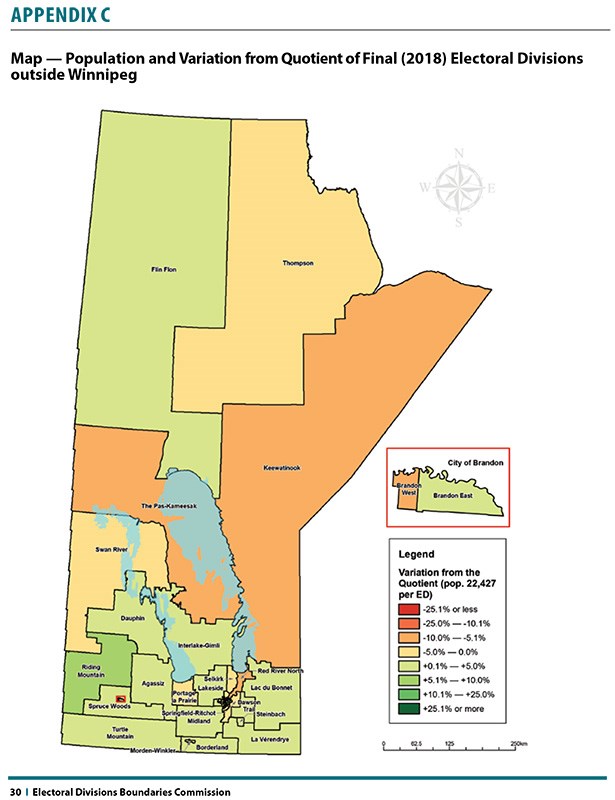Electoral boundaries will change for the 2020 provincial election now that the Electoral Division Boundaries Commission has submitted its final report to the lieutenant-governor and to the speaker of the Manitoba legislature.
Fifty-six of the 57 electoral division in Manitoba were changed by the commission, including all of the ridings in Northern Manitoba.
Churchill, Gillam, Nelson House and communities along the Hudson Bay Railway in the province’s northeast were taken away from the Keewatinook riding and added to the Thompson electoral division, while Cross Lake and Norway House were added to the Flin Flon division. The commission had earlier proposed combining the current Flin Flon and The Pas electoral divisions and creating a new division called Kameesak out of much of the Swan River division and the Interlake area. Instead, that part of the Interlake has been added to The Pas riding, which will be renamed The Pas-Kameesak. The Keewatinook electoral division, the largest in Manitoba, which previously stretched from the Manitoba-Nunavut boundary down to the southern shores of Lake Winnipeg, has been reduced by about seven per cent, the commision said in its final report. The northern electoral divisions now have 10 to 14 communities apiece.
“Under the new boundaries, the four electoral divisions in the north have better balanced populations, are more similar in size and respect travel patterns as well as communities of interest,” said the commission’s final report, which will come into effect for the next general provincial election but not for any byelections between now and 2020.
As a result of the adjustments, the Flin Flon electoral division, which was previously 30 per cent below the established population quiotient (obtained by dividing the 2016 census population by the 57 electoral divisions), is now about 0.1 to five per cent above the quotient. The new Thompson riding should be no more than five per cent below the population quotient, while The Pas-Kameesak and Keewatinook should both be between five and 10 per cent below the quotient.
Commission chair Manitoba Chief Justice Richard Chartier said during a public meeting in Thompson in September that while Manitoba’s legislation allows population in each division north of the 53rd parallel to range from 16,827 to 28,034 – 25 per cent above or below the quotient of 22,427, the Supreme Court has also said that, as long as effective representation is maintained, parity must be the primary consideration when reapportioning districts, to ensure that each person’s vote carries about the same weight. Currently, he said, a Flin Flon voter has about one-and-a-half times the influence of one from The Pas.
The commision held 13 public hearings around the province and received over 200 submissions regarding their proposed changes.
“To maintain public confidence in the electoral division redistribution process, public consultation is vital,” said Chartier in a press release. “The public’s submissions greatly assisted us in making the final determinations of the boundaries.”




